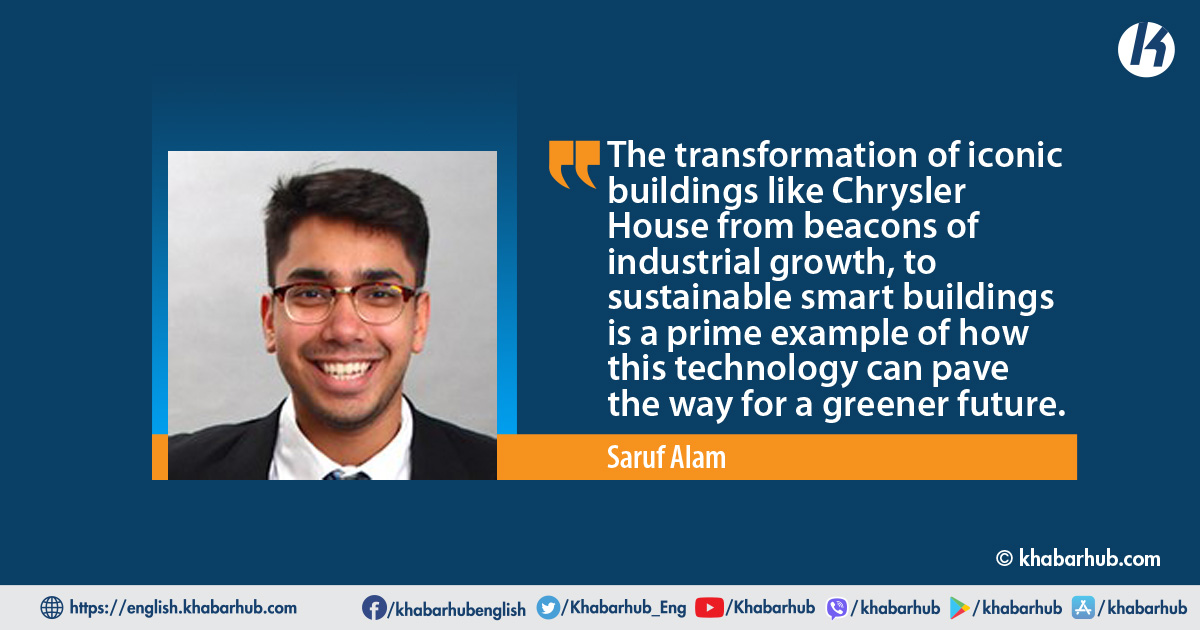As nations gathered at the COP27 conference, global emissions still remained far above the limit required to prevent the Earth’s temperature from exceeding 1.5 degrees Celsius.
Subsequently, upon returning to our respective homes, we are confronted with a daunting task of accelerating our efforts to reduce greenhouse gas emissions in order to adhere to the goals established by the Paris Agreement.
While many energy mitigation avenues are being explored and adoption of clean energy technologies continues to gain momentum, there is a less talked about area of opportunity that could be leveraged today for a large positive impact on energy mitigation: smart building deployment.
As per UNEP estimates, real estate is responsible for 40% of the world’s energy consumption, and 33% of total carbon emissions.
With urban space and its demand for energy continuing to grow, it is crucial to find strategies to mitigate real estate energy consumption at a global scale.
Most new constructions today are deployed as smart buildings, however the advantages presented by such technology are not limited to only recent developments.
This need hasn’t been lost on various nations. According to the UNFCCC TNA reports for developing countries, 86% said energy mitigation is their primary concern.
Furthermore, energy mitigation for building technologies was the 4th most prioritized topic under energy technology measures.
While everyone has recognized the importance of decarbonizing buildings, achieving this goal can prove challenging since the majority of buildings have already been constructed.
This is where smart building technologies can be especially impactful. A smart building is a structure that interconnects various technologies available in the space into one centralized platform in order to improve visibility into building performance and optimize for building operations.
Typically, conventional building systems such as HVAC, lighting, fire and energy monitoring all live in their silos.
However, in a smart building, because these are all tied into one platform, building teams are able to proactively identify system issues, cross-examine system data, and create benchmarking to track building metrics over time.
Such a data-driven approach allows them to manage their building more efficiently and prevent catastrophic failures.
Furthermore, many smart building platforms also deploy advanced algorithms that automate the operations of building equipment to optimize for energy efficiency.
The success at Chrysler House is not just an isolated occurrence. Bedrock has also deployed this smart building platform across their entire portfolio, significantly reducing energy consumption for over 20M+ sqft of existing buildings across Detroit.
These operational efficiencies and energy mitigation can reduce energy consumption in buildings by up to 40%.
Most new constructions today are deployed as smart buildings, however the advantages presented by such technology are not limited to only recent developments.
Existing buildings can also be greatly improved upon through enabling smart technologies onsite.
A notable example of this is Chrysler House, an iconic skyscraper in Downtown Detroit.
Originally known as the Dime Building, this site was built in 1912, and is a reminder of the rich history of Detroit as an industrial hub.
Chrysler House’s neoclassical architecture and lavish interior design belies the fact that it is also one of the smartest buildings in the world.
This building ties its critical systems such as HVAC, lighting, fire and electrical metering into a centralized smart building platform provided by a Detroit-based startup called KODE Labs.
Through this platform, Bedrock Detroit, the building owner, leveraged machine learning algorithms to minimize equipment runtime and reduce energy consumption by 30%.
Moreover, by using automated equipment testing, they were able to consistently evaluate equipment performance and repair malfunctioning devices before they failed.
Although recent national initiatives are pushing the boundaries of this groundbreaking field, there is still much work to be done at the international level. COP27 served as a catalyst for the discussion of smart buildings on a global scale, with the participation of Johnson Controls CEO, George Oliver.
This type of preventative maintenance has helped them extend equipment life cycle, and improve overall equipment efficiency.
The success at Chrysler House is not just an isolated occurrence. Bedrock has also deployed this smart building platform across their entire portfolio, significantly reducing energy consumption for over 20M+ sqft of existing buildings across Detroit.
Other portfolios and corporations are taking similar measures by creating smart building strategies that lay out a roadmap on how they will make all their buildings, new and old, smart.
The trends set at the private sector level are also reaching a national scale. Governments worldwide are starting to embrace the smart building revolution, recognizing the potential for significant energy savings with minimal infrastructure requirements.
In August 2022, the US government announced a “climate smart buildings initiative” with the goal to upgrade all its existing federal buildings with smart building technologies.
This initiative is predicted to cut GHG emissions by 2.8 Million metric tons and reduce energy consumption by 50%.
Similarly, in 2022, Australia updated its National Construction Code to include increasingly strict energy efficiency and sustainability requirements for building projects.
These measures look to ensure that urban developments leverage smart building technologies to minimize energy consumption.
The transformation of iconic buildings like Chrysler House from beacons of industrial growth, to sustainable smart buildings is a prime example of how this technology can pave the way for a greener future.
Although recent national initiatives are pushing the boundaries of this groundbreaking field, there is still much work to be done at the international level. COP27 served as a catalyst for the discussion of smart buildings on a global scale, with the participation of Johnson Controls CEO, George Oliver.
However, it will take more collaborations like this one to increase understanding of these technologies and to develop productive strategies for incorporating their use into international initiatives.
As we strive to meet the ambitious goals set by the Paris Agreement, it’s crucial that we explore every avenue of opportunity for reducing greenhouse gas emissions.
While the adoption of clean energy technologies is on the rise, the smart building industry offers a less talked about but highly impactful solution.
Its ability to mitigate energy consumption for both new and existing buildings presents a unique opportunity to rapidly impact an industry that consumes almost half of the world’s energy.
The private sector is already making strides in this area, and governments worldwide are also starting to take notice.
The transformation of iconic buildings like Chrysler House from beacons of industrial growth, to sustainable smart buildings is a prime example of how this technology can pave the way for a greener future.
With the continued growth of urbanization and the demand for energy, smart building deployment is an opportunity we can’t afford to miss.
(Saruf Alam is a smart buildings expert currently working as the Director of Smart Building Projects at KODE Labs Inc.)









Comment